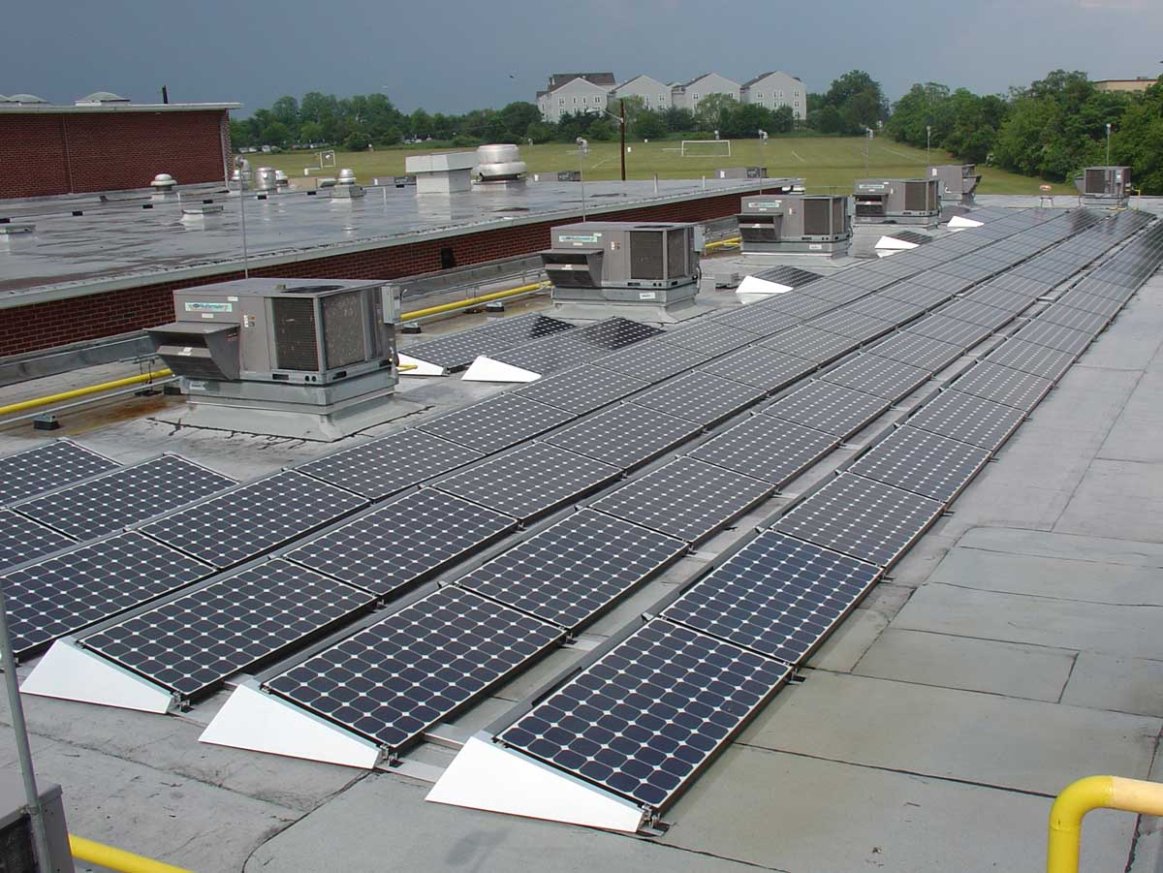
The array’s tilt is the angle in degrees from horizontal. A flat roof has a 0-degree tilt and a vertical wall mount has a 90-degree tilt angle. Whether you are installing a solar panel on a flat roof or a pitched roof, the output of the solar PV system would be increased by optimizing the tilt angle.
One can ask the question, how much would the energy output change in a case where the array is tilted 30 degrees instead of 10 degrees? To answer this question; we must initially be aware of the following;
- The Latitude
The sun, at noontime, is not always directly on top of us. The sun will be slightly to your south throughout the year if your location is north of 30 degrees latitude in the Northern Hemisphere (approximately the border of Mexico and the USA.)
The array output is highest, if the array faces directly to the sun at all times. Since the location of the sun moves throughout the day, it is not possible to face directly to the sun unless a system uses a 2-axis solar tracker. Yet, it is possible to maximize the output by tilting the array at an optimal angle.
- The Shade of the Tilted Array
A tilted array on a flat roof means an obstacle for other modules in the same roof. The goal is to eliminate shade on any modules at any time. Therefore, there should be enough clearance between the rows of the array.
So how much would the energy output change with different tilt angles?
Completing a simple calculation on the free software SAM (System Advisor Model) provided by NREL (National Renewable Energy Laboratory), the sample 3.4 kW systems consist of 16x HIT-N215A modules and are assumed to be located in both Phoenix, AZ and in Portland, OR.
| Array Tilt Angle (degrees) | Phoenix, AZ (33 North) | Portland, OR (45 North) | ||
| Annual Production (kWh) | Delta (%) | Annual Production (kWh) | Delta (%) | |
| 0 - flat | 5,723 | 0 | 3,624 | 0 |
| 10 | 6,178 | +8% | 4,019 | +9% |
| 20 | 6,461 | +13% | 4,239 | +15% |
| 30 | 6,575 | +15% | 4,355 | +18% |
| 40 | 6,526 | +14% | 4,368 | +18% |
| 50 | 6,310 | +10% | 4,279 | +16% |
| 90 - vertical | 3,966 | -31% | 2,967 | -20% |
This example shows that the solar array tilt angle of 20 to 30 degrees would significantly increase the energy output of the system. The positive effect of the array tilt angle is higher in northern cities than in the cities closer to the equator.
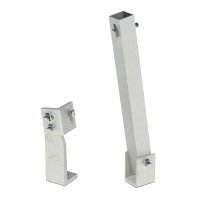
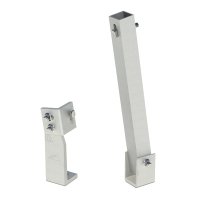
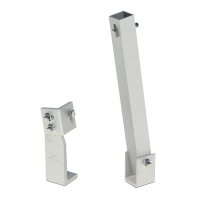


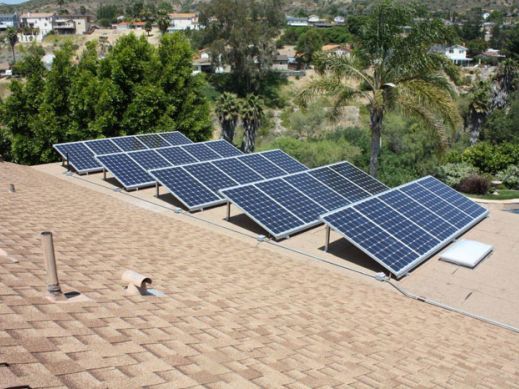
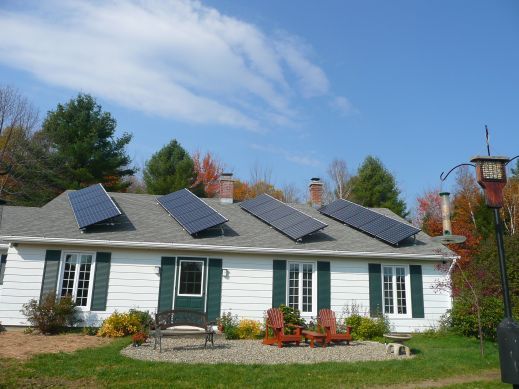
Comments
For jobs in California you can also run the CSI EPBB Calculator to see the difference in incentives and projected production based on various tilt degrees.
How does the Solar Advisor Model (SAM) differ from PV Watts for projecting energy production based on tilt or other design factors? Thanks.
This is a great question.
PV Watts is a tool that is generated by NREL Renewable Resource Data Center who provides access to an extensive collection of renewable energy resource, data and maps. The tool uses the typical meteorological year data for selected location and determines the solar radiation of the PV array. It also allows users to see estimated hourly, monthly and yearly energy output datas.
SAM is a performance and economic model designed together with Department of Energy and Sandia National Labaratories. By using SAM, the user can calculate installation and operation costs, type of financing, applicable tax credits and incentives in addition to hourly, monthly and annual system performance data.
I can say that PV Watts (both version 1 and 2) is a great tool for quick estimations that could be used for quotes or project estimates. SAM is very useful on the project development phase especially for those who would like to investigate the financial part of the solar PV projects.
This is helpful, but one thing I don't really understand is that my array in the San Francisco Bay Area is tilted at 22 Degrees and my Latitude is about 37. That doesn't seem to match your table - but I was assured that 22 degrees was optimal for my grid connected installation? Can someone explain?
Thanks!
Martha,
Your optimal tilt angle is actually probably closer to 20 Degrees - your roof may be 22 deg., and the modules are just racked parallel to the roof. The reason that's considered close to optimal is because the system is designed for revenue generation under the California Solar Initiative rebate program. The CSI is heavily biased toward solar production in the Summer months (roughly May through September) when the sun is higher in the sky and electrical demand is highest in your area. The higher sun angle requires a lower module angle.
Also, is there a software tool for calculating the self-shading of an array at a given tilt angle? Thanks again for your answers...
As a rule of thumb: X >= 2*H
where X: space between rows, H: height of the tilted array
The spacing between the rows should be at least two times the height of the tilted front row.
The self-shading would change depending on the time of the day and the time of the year. You can use Google SketchUp for almost precise shading calculations.
What is the expected ***peak output*** of a panel perpendicular to the sun at noon at different days of the year. Yes the sun is lower , the uv is less and the hours of good sun are shorter. But nobody seems to even consider the possibility of changing the angle and tracking of the panels to optimize output. Panels are cheap enough now that 3 sets of panels on 3 sides of a structure could even be used. e/w at 50 to 60 degrees from horizontal and south at 25(summer) from horizontal to 45 degrees(winter) depending on season. ( angles are another bad point. What do people consider 0 degrees panel angle? Horizontal or vertical =0?)
Great question. We consider 0 degrees to be flat as in 0/12 pitch. This ties into existing roofing terminology. 0 and 90 could both be accurate, though we tend to align with existing built environment norms.
Yes, you can point panels any way you like! Just use your normal modeling formulas to calculate output and stringing and build the array that works for your location and mounting surface. We designed one for Antarctica once that was mounted at 90 degrees (vertical) to scrape the Antarctic summer sun as it passed across the bottom of the earth.
Decided to find out how a panel reacted to different angles and loads. Took my brand new panel out side and tested it with various loads the various angles. Perpendicular i got open volts of 19.25 and short current of 19.25 amps. makes max limit 119 watts tho it wouldnt ever reach it. One headlamp load gave 17.4v at 4.65 amps. 80.91 watts max with bright summer sun. With 2 headlamps i got the max 6.15 amps at 11.33 volts. for 70 watts. max amps but lower voltage. If you run it directly into a 12v battery bank it would be 81available vs 70 watts actually put in. 12vx6amps. Thats why its awesome to get a buck inverter which i hope to build or find cheap. so can take that 17v or so peak efficiency point and convert it to a lower voltage at higher amps. I knew there was a difference but this basic test confimed the at least 10% to 20% into a battery bank if you can match the output to the storage banks voltage. I found that a plus or minus 20 degree tilt only made about a 10 to 15 % difference in output. But between matching the power curve to the storage medium and the perpendicular aim you could gain 30% or more over a misaimed bank into a set of 12v batteries directly. I am really hoping to find or build some buck converters for my system. 13 to 19 v in and 13v out would be nice.
Several factors affect module production including; tilt, azimuth, temperature, and time of year. Refer to standard testing conditions to understand what was used to generate the panels listed output. Thank you for your comment.
Do you think you could please change the type font on this web site as the letters are so fine and spindly they are very difficult (near impossible) to read? Thanks!